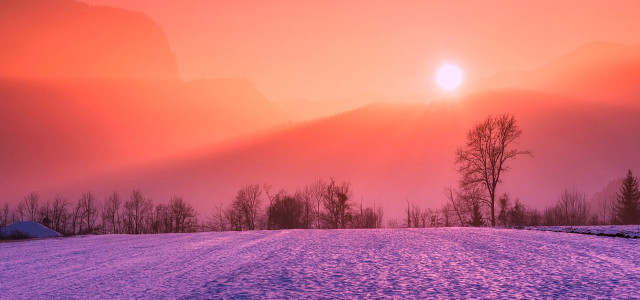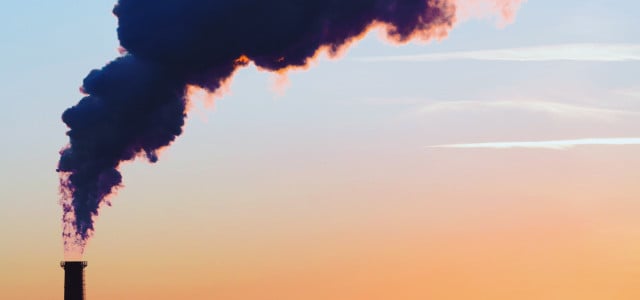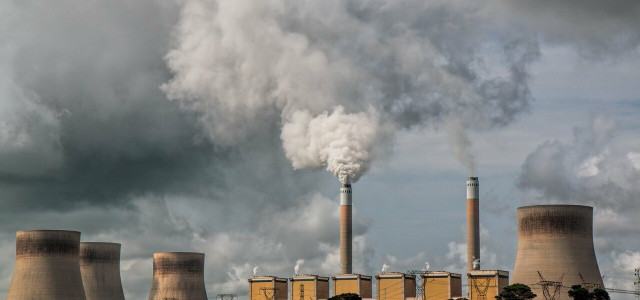Colored snow is an interesting environmental phenomenon. It can be all colors of the spectrum. From algae to dust, we’ll explain the origins and implications of various snow colors.
Snow is a natural wonder we are all familiar with. It is formed by temperature drops in the atmosphere. With the right levels of moisture, snow crystals can form. They grow by absorbing water droplets. From there, snow accumulates on the ground if the temperatures are right.
The white color of snow is actually an optical illusion. Snow is in fact translucent. It appears white because white light bounces off the contours of the snowflakes. However, certain natural phenomena can affect this color.
In this article, we’ll be exploring why and how colored snow can appear.
Colored Snow: Reasons It Can Be Black

(Foto: CC0 / Pixabay / Walkerssk)
Black colored snow is an ominous occurrence that has been observed from the arctic to the Himalayas. Scientists tell us the cause of black snow is climate change.
A substance called cryoconite is responsible for this color. According to the National Snow and Ice Data Center (NSIDC), cryoconite is a deposit of soot and dust that binds to microbes on the surface of the snow. Deposits of cryoconite are formed by industrial emissions such as black carbon.
Black carbon is formed by incomplete fossil fuel combustion. A complete combustion would turn all carbon within the fuel into CO2, but the combustion is never 100 percent complete. The remaining pure carbon particles absorb light radiation. Even though they only have a lifetime of a few weeks once in the atmosphere, they can cause considerable damage: black carbon causes the atmosphere to warm, in other words — global warming. If it doesn’t decompose in the air, but rather accumulates on ice surfaces, the following happens: The black carbon absorbs more light from the sun due to its dark color and causes the surface below it to melt. The formed cryoconite sediment then sinks deeper and depper into the ‘pot holes’ in the ice as more and more thawing occurs in that surface area.
Reasons for Blue Snow
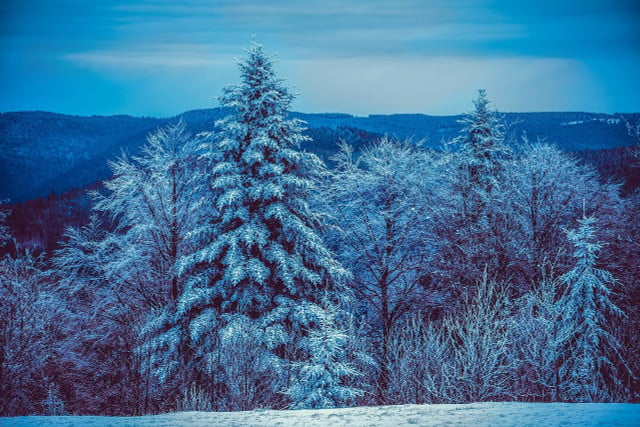


(Foto: CC0 / Pixabay / 1195798)
Alaska’s geophysical institute explains that blue colored snow is caused by light passing through ice particles. The ice absorbs red light from the sun and transmits blue. When snow falls in a glacial or another icy area, the light bounces around between the ice particles in the snow. With every bounce, more red is absorbed — leaving only blue. Therefore, the phenomenon goes more than skin deep: as the depth of the snow increases more red is absorbed, and it will “turn” vivid blue.
“Watermelon” Snow: Pink, Green and Red Colored Snow
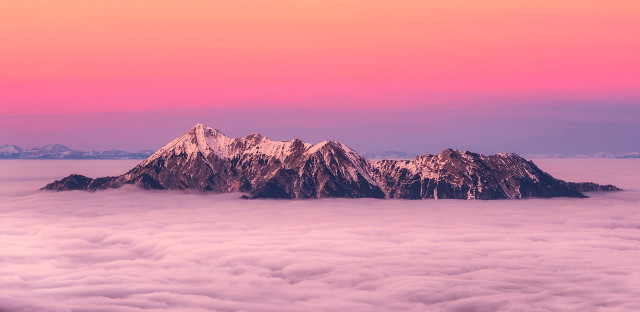


(Foto: CC0 / Pixabay / 12019)
“Watermelon” colored snow, also called “glacier blood” or just “red snow”, can be pink, green, red, and orange. This is caused by a type of algae called Chlamydomonas nivalis, which is especially well adapted to the cold. According to a recent paper, it might have been first documented over 2000 years ago — by the Greek philosopher Aristotle. These algae grow under extreme conditions, for example under low temperatures or in nutrient-deficient soil. And, they can actually live in the liquid between snow particles.
Under the right conditions, algae bloom and produce pigment which often is green. But certain varieties of this algae produce a secondary red pigment that adds pink, red, and orange tones to the snow.
While the snow might be pretty to look at, the CDC warns some algae can be toxic to humans. Moreover, scientists believe that this can trigger the albedo effect: the red color turns the snow darker and less light and heat can be reflected back into the atmosphere. As the red pigment turns the snow surface darker, it increases the amount of light and heat absorbed by the snow. This means that more heat is trapped, and the snow melts even faster, which in turn helps the algae reproduce.
Other Colored Snow and Their Causes



(Foto: CC0 / Pixabay / Goumbik)
Yellow Snow
This is another type of colored snow caused by algae blooms. The responsible algae are called Chrysophyceae, also known as golden algae. Like our green algae, it thrives under low temperatures. And, when in bloom, the pigment of the golden algae produces the brown-yellow snow.
However, yellow snow isn’t just produced by algae. In 2008, parts of Russia and Northern Europe observed sandy and saffron-colored snow. Scientists believe this was caused by dust blown from the semi-desert region of northwest Kazakhstan.
Grey or Purple Snow
Another type of algae called Mesotaenium berggrenii causes a purplish-grey coloration in snow and ice. As with other algae blooms, the resulting darker-colored snow can create the albedo effect.
Which Colored Snow Is Worse for the Environment?



(Foto: CC0 / Pixabay / No-longer-here)
If we return to the albedo effect — we know that the more light absorbed by the colored snow, the faster it melts. But some colors absorb more light than others. Between white and black, the wavelength of the color decides how much light it can absorb.
Most to least absorbent colored snows (by wavelength):
- Purple (400 to 450 nm)
- Blue (450 to 495 nm)
- Green (495 to 570 nm)
- Yellow (570 to 590 nm)
- Orange (590 to 620 nm)
- Red (620 to 750 nm)
Of all colors, black can absorb the most heat. It absorbs all wavelengths and reflects no light — while white absorbs the least and reflects the most. As a result, the darker colored snows have the potential to cause more damage by pure warming effects. Which toll on the environment the other factors of the different colored snows take, is hard to say. From various types of algae to certain forms of pollution that alter the color of the snow: often the consequences on our ecosystems can’t be predicted.
In the case of black snow, scientists hypothesize that one of the main contributing factors of black carbon (the cause of black snow) is vehicle emissions. By reducing how often we drive or considering alternatives to driving, we may be able to reduce the production of black snow.
Read more:
- How to Save Money on Gas in 2022 & Do Something for the Environment
- Climate Change Denial: How to Stand Up To Skeptics
- What is Sustainable Development and Why Is It Necessary?
- The Top 5 Human Activities That Contribute to Air Pollution
Do you like this post?






